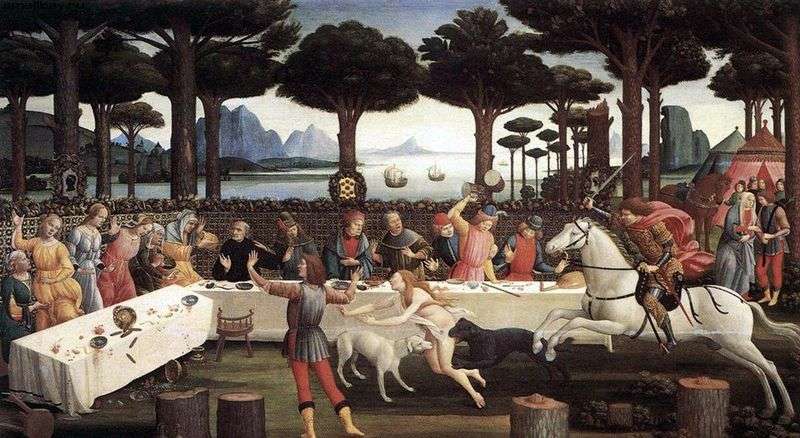
Painting by artist Sandro Botticelli “History of Nastajo degli Onesti”, scene third “Dinner at Nastajo degli Onesti”, a series of four paintings to “Decameron” by Boccaccio. The size of the work is 84 x 142 cm, wood, tempera. Vasari reports that Sandro Botticelli “for Pucci’s house… wrote four small charming paintings with small figures on the novel Boccaccio on Nastaggio degli Onesti.” These compositions on the occasion of the marriage of Janozzo Pucci and Lucretia Bini in 1483 ordered the artist Lorenzo the Magnificent.
Sandro Botticelli fulfilled the general plan on the cardboard, over the scenes paintings worked his assistants Bartolomeo di Giovanni and Jacopo Celayo. This explains the not so high level of performance, as in the author’s works of Sandro Botticelli. With a general elegance of forms and dramatic tension, the lines appear dry and the color is enamel and sharp. The plot of the novel from the “Decameron” Boccaccio, combining cruelty and courtesy, impressed the tastes of customers from the court circle of the Medici. The story tells how a rich young man from Ravenna named Nastaggio degli Onesti fell in love with a girl belonging to the more famous Traversari family. “All efforts of the lover were arrogantly rejected by the beauty.
Desperate young man retired to Chiassi near Ravenna, where, walking in a grove, immersed in the dreams of his lady of the heart, he came across a horrifying sight. Two dogs pursued and bitten a naked girl, and behind it a rider with a sword was chasing, threatening with death.
Wanting to save the unfortunate, Nastagio grabbed the branch of the tree, but heard from the rider a love story that led him to suicide. Once after death in hell, the obstinate girl who cruelly rejected the lover is doomed to run away from him forever, and he – again and again to kill his victim and throw her cold heart at the devouring of dogs. In the third scene, the artist Sandro Botticelli depicts how Nastagio invited his friends and the Traversari family with their arrogant daughter to the place where he witnessed the “torment of a cruel woman.” The artist creates a beautiful composition, animated by bright color spots. He carefully transmits the everyday realities of the time.
The action is presented at the climax, when the festive atmosphere of the feast was sharply disturbed by the appearance of a naked girl tortured by dogs, and the rider who overtook her with a raised sword. Nastajo’s guests react to the situation with poses and gestures expressing horror, amazement, compassion. Theatrical character of the construction is emphasized by the figure of Nastajo: turning to his guests, with the eloquent gesture of widely divorced hands, he explains the essence of the terrible vision. Tracing an episode of the novella in the language of cassoni painting, the master gives him dramatic expressiveness. The composition of the fourth episode contains the ending of the novel, where a frightened girl from the house of Traversari agreed to marry Nastagio.
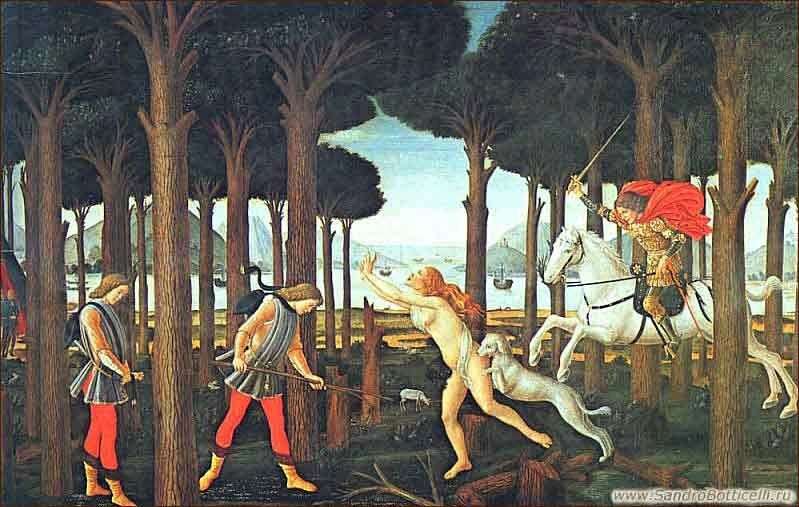 Novella Boccaccio “Nastagio degli Onesti” the first episode by Sandro Botticelli
Novella Boccaccio “Nastagio degli Onesti” the first episode by Sandro Botticelli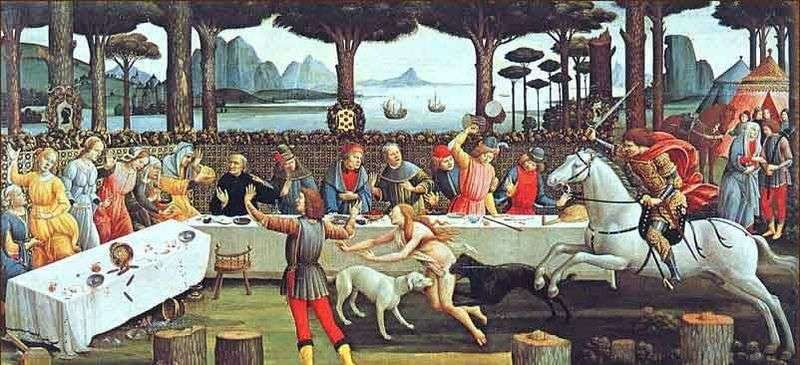 Novella Boccaccio “Nastagio degli Onesti” third episode by Sandro Botticelli
Novella Boccaccio “Nastagio degli Onesti” third episode by Sandro Botticelli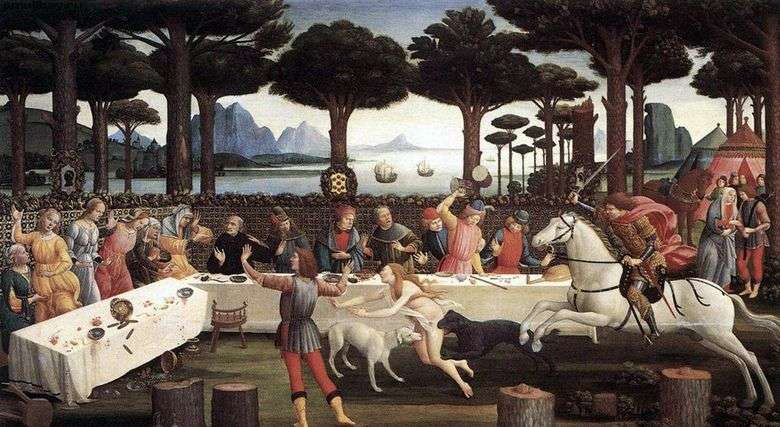 Cena de Nastagio en Onisti (Historia de Nastajo degli Onesti) – Sandro Botticelli
Cena de Nastagio en Onisti (Historia de Nastajo degli Onesti) – Sandro Botticelli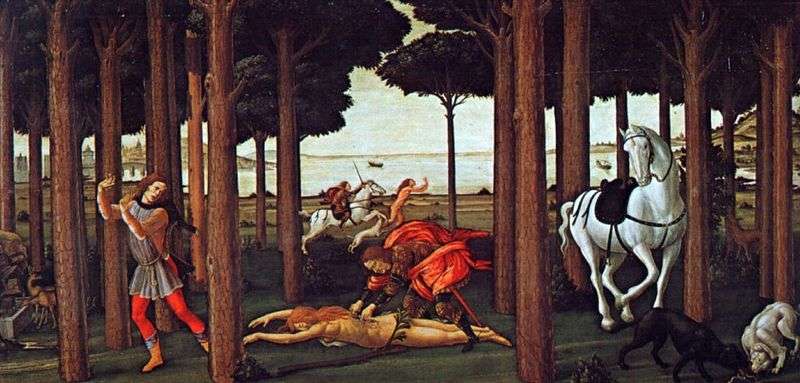 Novella Boccaccio “Nastagio degli Onesti” second episode by Sandro Botticelli
Novella Boccaccio “Nastagio degli Onesti” second episode by Sandro Botticelli Dîner de Nastagio à Onisti (Histoire de Nastaggio degli Onesti) – Sandro Botticelli
Dîner de Nastagio à Onisti (Histoire de Nastaggio degli Onesti) – Sandro Botticelli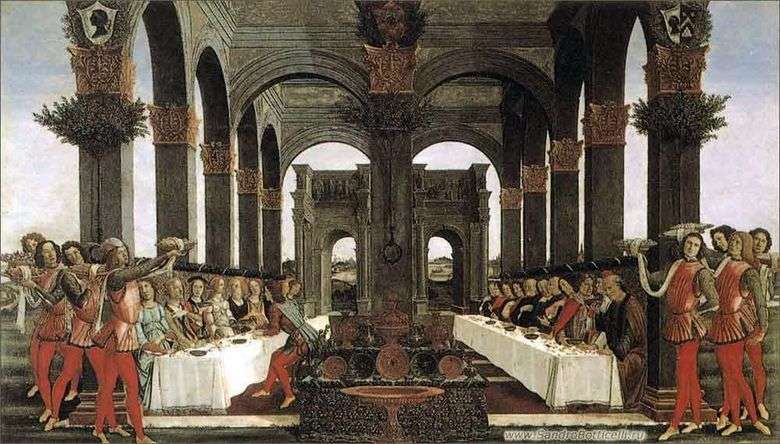 Nokla Boccaccio “Nastajo degli Onesti” el cuarto episodio – Sandro Botticelli
Nokla Boccaccio “Nastajo degli Onesti” el cuarto episodio – Sandro Botticelli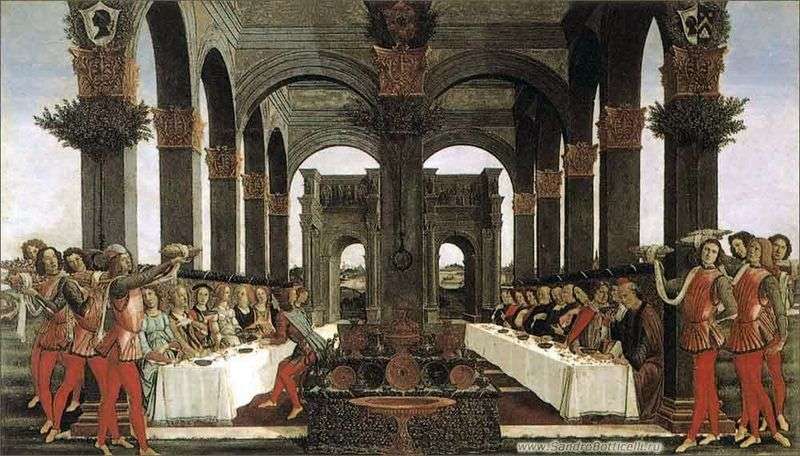 Novella Boccaccio “Nastagio degli Onesti” the fourth episode by Sandro Botticelli
Novella Boccaccio “Nastagio degli Onesti” the fourth episode by Sandro Botticelli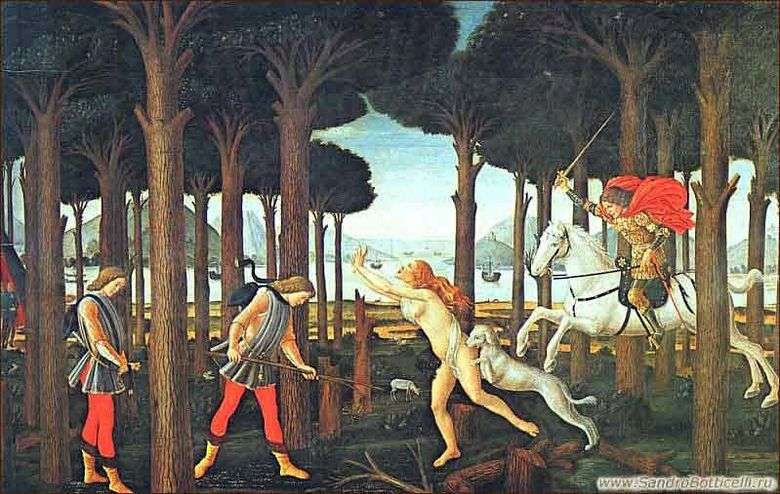 Nokula Boccaccio “Nastajo degli Onesti” el primer episodio – Sandro Botticelli
Nokula Boccaccio “Nastajo degli Onesti” el primer episodio – Sandro Botticelli